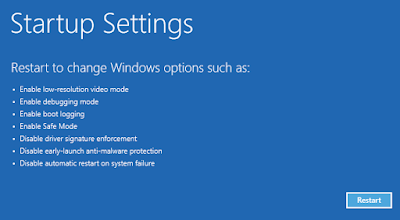SYSG.EXE
Possible Steps For Removing SYSG.EXE from Firefox
Look at various different errors caused by SYSG.EXE Error 0x80246007, 0x80240FFF WU_E_UNEXPECTED An operation failed due to reasons not covered by another error code., 0x8024E006 WU_E_EE_INVALID_ATTRIBUTEDATA An expression evaluator operation could not be completed because there was an invalid attribute., 0xf0813 CBS_E_INVALID_INSTALL_STATE install state value not acceptable, 0x00000043, 0x000000BF, 0x80242014 WU_E_UH_POSTREBOOTSTILLPENDING The post-reboot operation for the update is still in progress., 0x80249005 WU_E_INVENTORY_WMI_ERROR A WMI error occurred when enumerating the instances for a particular class., 0x000000F1, 0x00000116, 0xf0804CBS_E_OPEN_FAILED the update could not be found or could not be opened, 0x0000003E, 0x8024000A WU_E_COULDNOTCANCEL Cancellation of the operation was not allowed., 0x80249003 WU_E_INVENTORY_RESULT_UPLOAD_FAILED Failed to upload inventory result to the server., 0x80240026 WU_E_INVALID_UPDATE_TYPE The type of update is invalid.Easy Steps To Delete SYSG.EXE From Infected System
SYSG.EXE is detected as a perilous System threat which can harm your System data and files very badly. It intrudes your System silently and secretly so that you will not identify its presence easily and it can spread itself as much as possible. It can corrupt your data and make it inaccessible. Moreover, it can cause your System to degrade its performance and applications to respond slowly.
You can infect your System in many ways like when you open a spam email, visit some unknown and untrusted site, clicking malicious ads or pop-ups and many other ways. But one important method used by SYSG.EXE is bundling method in which it gets installed directly with the installation of free downloads. On its arrival into the system, it can almost disturbs the internal settings and functioning of the System. Hence, if you find such malware into the System, you need to Delete it.
Guide 1 : Do Away With SYSG.EXE From Internet Explorer In System
Guide 2 : Do Away With SYSG.EXE From Control Panel In System
Guide 3 : Do Away With SYSG.EXE From Registry Entry In System
Guide 4 : Do Away With SYSG.EXE From Task Manager In System
Guide 5 : Guides To Start System In Safe Mode
Know How To Effectively Delete SYSG.EXE From Your System
Guide 1 : Do Away With SYSG.EXE From Internet Explorer In System
From Internet Explorer -
- Click on Gear icon to open Tools menu in the Internet Explorer window.
- Click on Manage Add-ons option.
- Goto Toolbars and Extensions tab.
- Locate SYSG.EXE related add-ons - > Disable button.
- Click More information button and finally click on Delete button to completely Delete SYSG.EXE.

From Google Chrome -
- At first, launch the Google Chrome browser.
- Click on gear icon present in your browser to open Chrome menu.
- Click on Tools option.
- Click on Extension.
- Select all unwanted extensions.
- Click on trash bin icon to Delete SYSG.EXE.

From Mozilla Firefox -
- Click on the Menu icon present at the top right corner of the browser.
- Select Add-ons option.
- In the Add-ons window, choose the Extensions or Appearance panel.
- Select add-on related to SYSG.EXE which you want to Delete.
- Click the Remove button.
- Click Restart if it asks.

From Microsoft Edge -
- Click on More (...) icon and click Settings then.

- Now, select A specific page or pages under the Open with option.
- Again, select Custom option.
- Type the URL of the page you want to set as your browser's default homepage.

Guide 2 : Do Away With SYSG.EXE From Control Panel In System
For Windows XP
- Click on Start button and click Control Panel.

- Select Add or Remove Programs option.

- Find and Delete SYSG.EXE related programs in the window that appears.

For Windows 7
- Press Window key present on the keyboard.

- Click Control Panel option from the menu.

- A Control Panel window appears from where click on Programs option.

- Select executable file of SYSG.EXE.
- Click on Uninstall option.

For Windows 8
- Open run box by pressing Window+R keys together.

- Type control panel and hit Enter key.

- Click on Delete a Program.

- Then select all the programs related to SYSG.EXE.
- Click Uninstall option.

For Windows 10
- Click on Start button.
- Select Settings option present in the bottom left corner of the screen.

- Select System option under Setting.

- Click on App & Features option.

- Now, Delete all the unwanted program.

Guide 3 : Do Away With SYSG.EXE From Registry Entry In System
- Press 'Windows+R' keys to open Run box.
- Type 'regedit' in the box and click OK button.

- Find out Delete all the registry files related to SYSG.EXE.
HKEY_LOCAL_MACHINESystemCurrentControlSetServicesWpm
HKEY_CURRENT_USERSoftwareMicrosoftInternet ExplorerMain “Default_Page_URL”
HKEY_LOCAL_Machine\Software\ClassesSYSG.EXE
HKEY_CURRENT_USER\Software\Microsoft\Windows\CurrentVersion\Run “.exe”
HKCU\Software\Microsoft\Windows\CurrentVersion\Internet Settings\random
HKEY_LOCAL_MACHINE\SOFTWARE\Microsoft\Windows\CurrentVersion\run\random
HKEY_CURRENT_USER\Software\Microsoft\Windows\CurrentVersion\Internet Settings “CertificateRevocation” = ’0
Guide 4 : Do Away With SYSG.EXE From Task Manager In System
- Press Alt + Ctrl + Delete keys altogether to open task manager.

- In the window, click on Process tab.
- Select the unwanted processes running.

- Click on End Process.
Guide 5 : Steps To Start System In Safe Mode
In windows XP/Vista/7 -
- Click on Start icon.
- Place the mouse on Shutdown button and then click on Restart button.

- Keep pressing F8 button when the System starts booting-up.
- Select 'Advance boot menu' present on the screen.

- Select 'Safe Mode With Networking' option and press Enter key.

In windows 8/10 -
- Click on Start button and press Shift key at the same time.

- Click on Restart button and click Troubleshoot option.

- Click on 'Advanced option' -> Startup Settings.

- Choose 'Enable Safe Mode' option from the given list and click on Restart.

- Press F5 button to choose 'Safe Mode With Networking' mode.


No comments:
Post a Comment